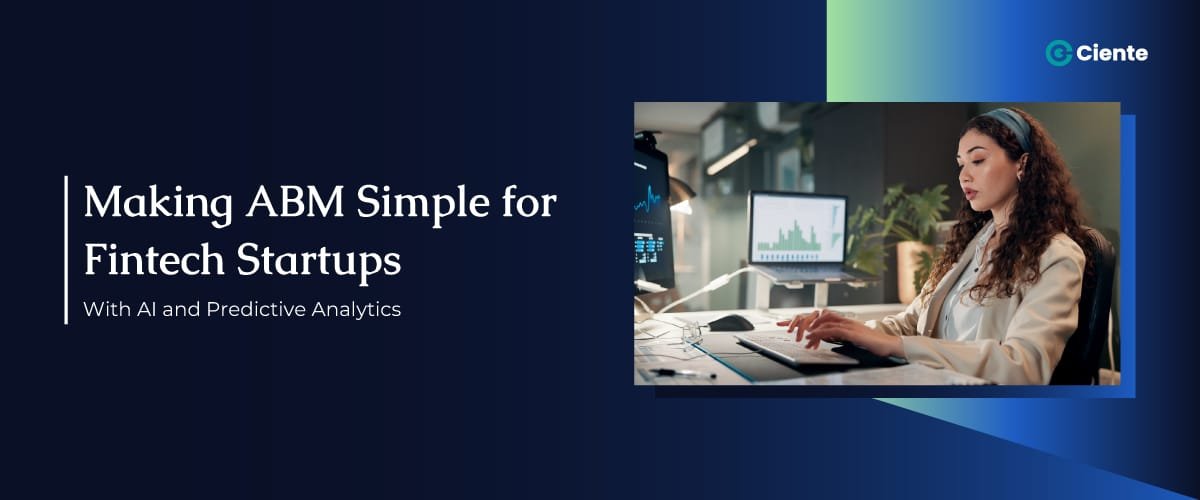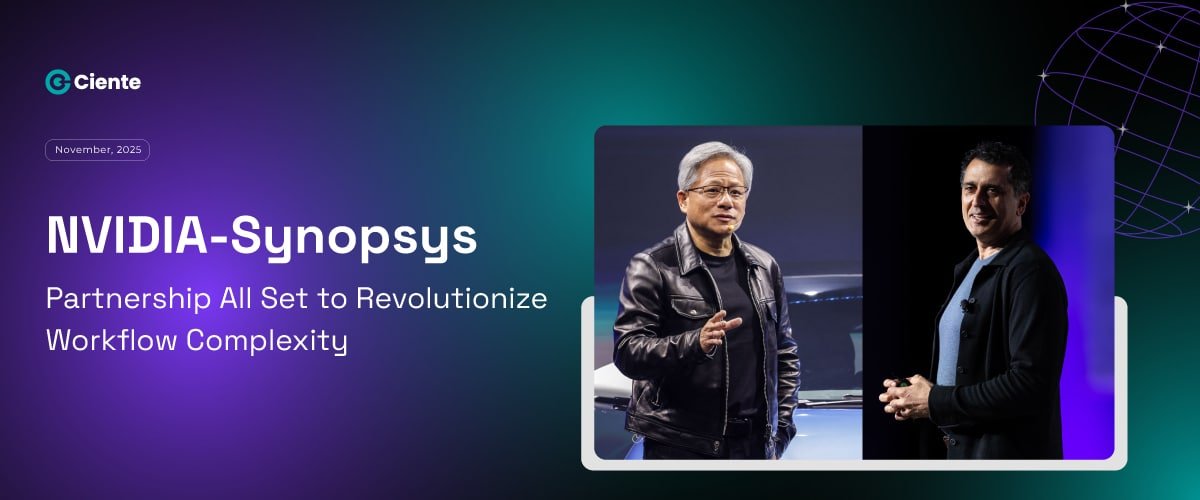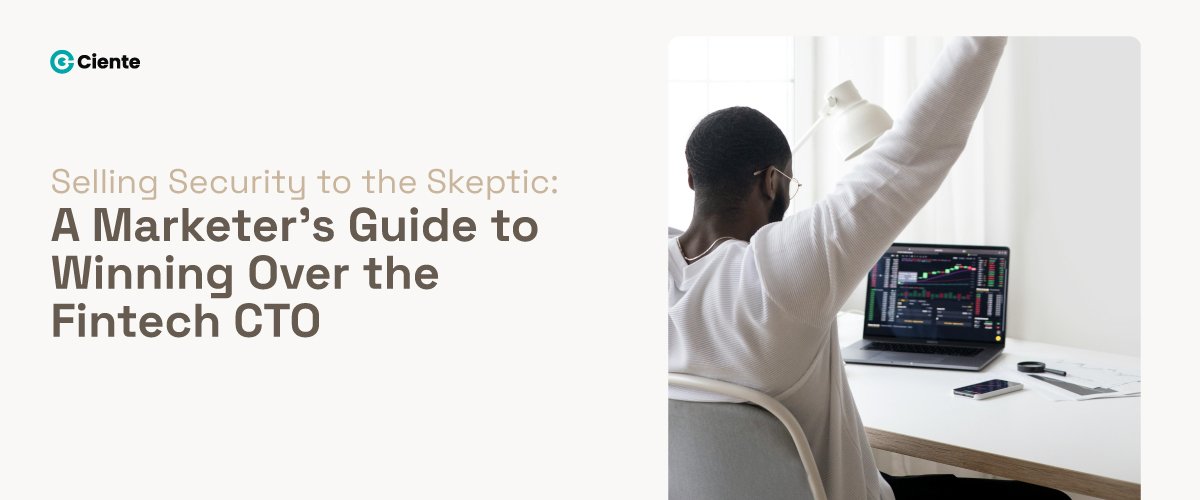Making ABM Simple for Fintech Startups With AI and Predictive Analytics
ABM fails when it’s reactive. You must dive into which accounts matter now and why. Here’s how AI and predictive analytics can help a fintech startup like you do precisely that. And scale faster.
FinTech moves fast enough to scald anyone who hesitates. Markets turn overnight. Demand surges and collapses without warning. Competitors appear from nowhere.
Funding dries up. Buyers disappear halfway through the funnel. Forecasting stops feeling strategic and starts feeling like gambling.
Most FinTech startups try to survive this chaos by copying what the bigger players do. They invest in content volume, automation systems, and demand capture tactics that once worked in predictable markets.
But none of it works anymore.
Growth becomes accidental instead of engineered. Revenue becomes unstable. And ABM collapses into a cluster of disconnected activities instead of a strategy.
The Case of ABM in the Fintech Industry
Most ABM programs in FinTech look good in a slide deck and fall apart in execution.
Where precisely do they go wrong?
- They chase accounts based on logo value.
- They target industries based on assumptions.
- They create campaigns without knowing where urgency lives.
- They obsess over job titles instead of motivation.
- They operate like detectives arriving after a crime scene.
Timing is always late. Momentum is already gone. And by the time a lead fills a form or downloads something, someone else has already shaped their thinking.
ABM becomes a performance rather than a weapon. Here’s a secret for you.
AI and predictive analytics can rewrite this script.
They expose early signals long before a buyer takes an obvious action. And reveal interest before the world sees it. They identify the shift within accounts when something is about to break open.
Luck and guesswork are replaced with foresight. This transforms ABM from a reactive marketing strategy into a proactive positioning. Your team goes from offense to defense.
Why ABM Needs Predictive Intelligence
Traditional ABM tracks surface activity. It all about vanity metrics- email clicks, website visits, event attendance, and content downloads.
But what marketers forget is that these signals show up too late in the customer journey. They arrive after the decision-forming work is already underway.
Teams see these signals and assume they create opportunity. They don’t. They confirm it.
And this is precisely why most pipelines are built too late.
Because by this time, most deals die. Most forecasting fails. And insights arrive after decisions are already made.
It’s where predictive analytics can remove the hitch.
Predictive analytics studies hundreds of hidden signals that reveal intent much earlier. It can be anything from hiring movements, budget restructuring patterns, or new compliance pressures, to technical restructuring or competitor content consumption.
These signals tell the story before the story forms. They indicate change. And this change drives the pipeline.
ABM without timing is noise. ABM with timing is your ultimate leverage.
Why FinTech Startups Need Predictive ABM for Growth
Startups do not win by spending more. They win by seeing sooner. They do not have a budget advantage. They have a focus advantage.
Precision is their only weapon.
They cannot target 10,000 accounts. They must target the 100 that matter now.
AI gives them that clarity. It removes personal bias. It kills guesswork.
It ranks accounts based on real movement instead of opinion. It exposes which accounts are heating up. It reveals the actual decision-maker within the buying committee. It identifies which message breaks resistance. And it guides when to attack for maximum velocity.
This advantage changes everything.
Sales stops chasing ghosts. They stop begging for conversations. They stop overrelying on cold messaging. They walk into rooms where buyers already feel understood.
Deals accelerate because of internal urgency that aligns with your timing.
Predictive ABM does not create a pipeline. It reveals it.
Case Study: How AI Rewired ABM for FinTech Companies
1. Ramp
Look at Ramp.
They used predictive analytics to identify companies that illustrated sudden interest in expense control before they posted public cost-cutting announcements. And outreach hit before competitors noticed anything.
The result?
Close rates jumped because they caught decisions that were still forming, not ones that were already made.
2. Brex
Brex analyzed funding activity patterns and learned that pipeline success correlated heavily with hiring rate volatility.
When companies hired fast, they bought aggressively. And when hiring froze, they bought risk tools instead. Messaging shifted based on prediction, not assumption.
ABM became timing intelligence, not persona fiction.
3. Chime
Chime built its acquisition model by studying behavior outside its owned channels.
It analyzed social signals during periods of economic stress. They noticed spikes in conversations around overdraft pain. Messaging shifted overnight.
This shift pushed them ahead of banks, spending millions more.
4. Stripe
Stripe never competed through ads.
It used predictive signals around developer community momentum. They reached people before their companies formalized their payment strategy. They shaped the belief that payments should be simple. This came before anyone had the chance to complain about complexities.
None of these examples is accidental. They all hinge on seeing what others miss.
How Predictive ABM Actually Changed the Game
Teams stop wasting time on accounts that look impressive but are unready.
They stop debating targeting based on political influence. They stop burning budget on content no one needed. They stop fixating on channel playbooks. So, what did these brands do correctly?
They build everything around proof rather than a feeling.
The company becomes the one that arrives early. The brand learns to speak directly to the internal conversation already happening.
Buyers stop feeling sold to. They feel understood.
And deals stop being forced. They start flowing smoothly through the pipeline.
A Tactical ABM Framework With AI and Predictive Analytics
This is how a FinTech startup transforms ABM into a growth engine:
- Identify the right-fit accounts: Pull predictive signals from intent platforms, CRM patterns, competitor movement, funding triggers, hiring data, and category velocity. Rank accounts based on readiness, not industry.
- Map pressure points: Study changes happening within each account. Know why urgency exists. Know what fear or opportunity drives action.
- Build messaging from pressure rather than personas: Speak to the internal conflict, not the job description. Speak to the motivation, not demographics.
- Time outreach based on signal spikes: The right message at the wrong time is noise. Timing creates momentum.
- Watch signal acceleration, not signal volume: Accounts that move quickly convert faster. Speed reveals intent strength.
- Measure conversation quality, not clicks: Conversion starts when a buyer drops their guard. The metric is honesty, not vanity.
- Align ABM with sales in real time: If sales learns something from a call, it becomes a data signal. If marketing sees a signal trend, it becomes a sales script. No walls.
Real World Example of the Framework
Imagine a startup selling fraud prevention solutions sees intent signals spike for three accounts after a series of high-profile fintech fraud news cycles.
Funding data shows one of the accounts just raised a round. Predictive scoring places them above everyone else. Then? Outreach launches within 24 hours, not three weeks later.
The seller enters the conversation with insight about the internal trigger, not a cold introduction. They say what the buyer is already thinking but has not voiced yet.
The deal is fast-tracked because the vendor understood timing and tension. That is predictive ABM.
And that’s how a pipeline is engineered.
ABM’s Future in FinTech is All About Creative Intelligence.
ABM used to be built on creativity.
Now it will be built on intelligence. Creativity will still matter, but timing and context will dominate.
The companies that win will not be the ones who shout the loudest. They will be the ones who see the earliest. They will break into conversations before they become public. They will build belief before the prospect realizes they need it.
AI will not replace humans. It will replace the guesswork.
And predictive analytics will not automate ABM. It will turn it into a competitive weapon.
This is the shift: from pursuit to anticipation.
Startups that learn this scale. The ones who do not die in their dashboards, wondering why nothing converts.
ABM breaks when it reacts. It wins when it predicts.
AI and predictive analytics give FinTech startups the only currency that matters now: foresight. Precision will replace volume. Timing replaces brute force. Influence replaces promotion.
The bottom line? Revenue becomes intentional, not accidental.
FinTech startups do not need bigger budgets or louder campaigns. They require intelligence. They need to say fewer things but with more truth. They need to act before the market wakes up, i.e., stay ahead of the curve.
If you want growth, stop chasing demand. Start recognizing it.






